- Home
- William Shakespeare
The Taming of the Shrew
The Taming of the Shrew Read online
The RSC Shakespeare
Edited by Jonathan Bate and Eric Rasmussen
Chief Associate Editors: Heloise Senechal and Jan Sewell
Associate Editors: Trey Jansen, Eleanor Lowe, Lucy Munro, Dee Anna Phares
The Taming of the Shrew
Textual editing: Eric Rasmussen
Introduction and "Shakespeare's Career in the Theater": Jonathan Bate
Commentary: Charlotte Scott and Heloise Senechal
Scene-by-Scene Analysis: Esme Miskimmin
In Performance: Karin Brown (RSC stagings) and Jan Sewell (overview)
The Director's Cut (interviews by Jonathan Bate and Kevin Wright): Gregory Doran and Phyllida Lloyd Playing Kate: Michelle Gomez
Editorial Advisory Board
Gregory Doran, Chief Associate Director, Royal Shakespeare Company
Jim Davis, Professor of Theatre Studies, University of Warwick, UK
Charles Edelman, Senior Lecturer, Edith Cowan University, Western Australia
Lukas Erne, Professor of Modern English Literature, Universite de Geneve, Switzerland
Jacqui O'Hanlon, Director of Education, Royal Shakespeare Company
Akiko Kusunoki, Tokyo Woman's Christian University, Japan
Ron Rosenbaum, author and journalist, New York, USA
James Shapiro, Professor of English and Comparative Literature, Columbia University, USA
Tiffany Stern, Professor and Tutor in English, University of Oxford, UK
2010 Modern Library Paperback Edition Introduction copyright (c) 2007, 2009 by The Royal Shakespeare Company All rights reserved.
Published in the United States by Modern Library, an imprint of The Random House Publishing Group, a division of Random House, Inc., New York.
MODERN LIBRARY and the TORCHBEARER Design are registered trademarks of Random House, Inc.
"Royal Shakespeare Company," "RSC," and the RSC logo are trademarks or registered trademarks of The Royal Shakespeare Company.
The version of The Taming of the Shrew and the corresponding footnotes that appear in this volume were originally published in William Shakespeare: Complete Works, edited by Jonathan Bate and Eric Rasmussen, published in 2007 by Modern Library, an imprint of The Random House Publishing Group, a division of Random House, Inc.
eISBN: 978-1-58836876-8
www.modernlibrary.com
v3.1
CONTENTS
Cover
Title Page
Copyright
Introduction The "Taming" and the "Shrew"
The Critics Debate
About the Text
Key Facts
The Taming of the Shrew List of Parts
Textual Notes
Additional Sly Scenes and Kate's Submission Speech from The Taming of a Shrew (1594)
Scene-by-Scene Analysis
The Taming of the Shrew in Performance: The RSC and Beyond Four Centuries of The Shrew: An Overview
At the RSC
The Director's Cut: Interviews with Gregory Doran and Phyllida Lloyd
Playing Kate: An Interview with Michelle Gomez
Shakespeare's Career in the Theater Beginnings
Playhouses
The Ensemble at Work
The King's Man
Shakespeare's Works: A Chronology
Further Reading and Viewing
References
Acknowledgments and Picture Credits
The Modern Library
INTRODUCTION
THE "TAMING" AND THE "SHREW"
The Taming of the Shrew: is Kate (or should we call her Katherina?) really a "shrew" and is she really "tamed"?
The novelist Vladimir Nabokov once wrote that "reality" is a word that only has meaning when it is placed between quotation marks. The physicist's "reality" is not the same as the biochemist's, the secular humanist's as the religious fundamentalist's. Dare one say that woman's is not the same as man's? In a culture where the conception of inherent sexual difference is regarded as a mere prejudice, as a forbidden thought (regardless of the "reality" revealed by molecular biology and neuroanatomy), The Taming of the Shrew is not likely to be one of Shakespeare's most admired plays. Its presentation of female subordination presents the same kind of awkwardness for liberal sensibilities that the representation of Shylock does in the post-Holocaust world. At face value, the play proposes that desirable women are quiet and submissive, whereas women with spirit must be "tamed" through a combination of physical and mental abuse. Necessary tools may include starvation, sense deprivation, and the kind of distortion of "reality" that is practiced in totalitarian regimes.
Thus O'Brien to Winston Smith in George Orwell's 1984: "How many fingers am I holding up?" In this "reality" the correct answer is not the actual number but the number that the torturer says he is holding up. There is a precise analogy on the road back to Padua, after Kate has undergone her taming in the secluded country house where no neighbor will hear her cries:
PETRUCHIO I say it is the moon.
KATE I know it is the moon.
PETRUCHIO Nay, then you lie. It is the blessed sun.
KATE Then, God be blessed, it is the blessed sun.
But sun it is not, when you say it is not,
And the moon changes even as your mind.
What you will have it named, even that it is,
And so it shall be so for Katherine.
HORTENSIO Petruchio, go thy ways, the field is won.
She has been bent to her husband's will. She is now ready to demonstrate that she is prepared to love, serve, and obey him. She knows her place: "Such duty as the subject owes the prince / Even such a woman oweth to her husband." She offers to place her hand beneath her husband's foot. The shrew is tamed.
The younger dramatist John Fletcher, who was Shakespeare's collaborator in his final years, clearly thought that this harsh ending needed a riposte. He wrote a sequel, The Woman's Prize; or, The Tamer Tamed, in which Kate has died and Petruchio remarried, only to find his new wife giving him a taste of his own medicine by means of the time-honored device of refusing to sleep with him until he submits to her will. Kate's sister Bianca plays the role of colonel in a war between the sexes which the women win, thus proving that it was an act of folly for Petruchio to tyrannize over his first wife in Shakespeare's play.
In Shakespeare's time, it was absolutely orthodox to believe that a man was head of the household, as the monarch was head of state and God was head of the cosmos. "My foot my tutor?" says Prospero in The Tempest when his daughter, Miranda, presumes to speak out of turn: if the man was the head, the girl-child was the foot, just as in Coriolanus a plebeian is nothing more than the "big toe" of the commonwealth. Kate's readying of her hand to be trodden upon turns the analogy between social and bodily hierarchy into a stage image. But she is going much further than she should: the wife was not supposed to be beneath the foot, she was supposed to be the heart of the household. Instead of crowing in his triumph, Petruchio says "kiss me, Kate" for the third time, giving Cole Porter a title for his reimagining of the story in the cheerful mode of a musical.
Nabokov placed the word "reality" in quotation marks not because he was a cultural relativist, but because he was an aesthete. That is to say, he did not believe that art was merely a reflection, a mirror, of a preexistent "reality." Art shapes the way in which we perceive ourselves and the world. "Falling in love" is not only the work of molecular change in the brain, but also a set of behaviors learned from the romantic fictions of page, stage--now screen--and cultural memory. One of the tricks of great art is to draw attention to its own artificiality and in so doing paradoxically assert that its "reality" is as real as anything in the quotidian world of its audience. Shakespear
e's taste for plays-within-the-play and allusions to the theatricality of the world, Mozart's witty quotations of the cliches of operatic convention, and Nabokov's magical wordplay all fulfill this function.
Sometimes, though, the opposite device is used: an artist puts quotation marks around a work in order to say "Don't take this too seriously, don't mistake its feigning for 'reality.' " The Taming of the Shrew is such a work: the opening scenes with Christopher Sly place the entire play within quotation marks. The "induction" presents a series of wish-fulfillment fantasies to a drunken tinker: the fantasy that he is a lord, that he has a beautiful young wife, that scenes of erotic delight can be presented for his delectation, and that a company of professional players will stage "a kind of history" for his sole benefit, in order to frame his mind to "mirth and merriment" while teaching him how to tame a shrewish wife. But Sly is not a lord and the "wife" who watches with him is not a woman but a crossed-dressed boy--which reminds us that in Shakespeare's working world the Kate who is humiliated by Petruchio was also not a woman but a cross-dressed boy-actor. The effect of the frame is to distance the action and so to suggest that it does not present the "reality" of proper marital relations. If Sly is not a lord and the pageboy not a wife, then this is not how to tame a shrew.
In the surviving script of the play, Sly and the pageboy disappear after the first act, presumably because Shakespeare's acting company was not large enough to waste several members of the cast sitting in the gallery as spectators all the way through. But in an anonymously published play of 1594 called The Taming of a Shrew, which is a source, adaptation, reconstruction or variant version of Shakespeare's play, the Christopher Sly "frame" is maintained throughout the action by means of a series of brief interludes and an epilogue. This version ends with the tinker heading for home with the claim that the play has taught him how to tame a shrew and thus to handle his own wife. But the tapster knows better: "your wife will course [thrash] you for dreaming here tonight." The hungover Sly is in no position to tame anybody; he will return home and be soundly beaten by his wife. Kate's speech propounds the patriarchal ideal of marriage, but in A Shrew the union of Sly and his wife reveals this ideology's distance from "reality." Its implied resolution, with the woman on top, intimates that "real" housewives are not silent and obedient, and plays cannot teach husbands to tame them into submission.
We do not need the epilogue of the anonymously published play to see that Shakespeare's ending is more complicated and ironic than first appears. Having been outwitted in his courtship of Bianca, Hortensio marries the widow for her money. The latter shows signs of frowardness and has to be lectured by Kate. The first half of Kate's famous submission speech is spoken in the singular, addressed specifically to the widow and not to womankind in general: "Thy husband is thy lord, thy life, thy keeper, / Thy head, thy sovereign: one that cares for thee." The contextual irony of this is not always appreciated: in contradistinction to Kate's prescriptions, in the particular marriage to which she is referring it will be the wife, the wealthy widow, who provides the "maintenance." Hortensio will be spared the labors of a breadwinner. According to Kate, all a husband asks from a wife is love, good looks, and obedience; these are said to be "Too little payment for so great a debt." But the audience knows that in this case the debt is all Hortensio's. Besides, he has said earlier that he is no longer interested in woman's traditional attribute of "beauteous looks"--all he wants is the money. Kate's vision of obedience is made to look oddly irrelevant to the very marriage upon which she is offering advice.
Then there is Kate's sister. Petruchio's "taming school" is played off against the attempts by Lucentio and Hortensio to gain access to Bianca by disguising themselves as schoolmasters. In the scene in which Lucentio courts her in the guise of a Latin tutor, the woman gives as good as she gets. She is happy to flirt with her supposed teacher over Ovid's erotic manual The Art of Love. This relationship offers a model of courtship and marriage built on mutual desire and consent. Bianca escapes her class of sixteenth-century woman's usual fate of being married to a partner of the father's choice, such as rich old Gremio. If anything, Bianca is the dominant partner at the end. She is not read a lecture by Kate, as the widow is, and she gets the better of her husband in their final onstage exchange. Like Beatrice in Much Ado About Nothing, she more than matches her man in the art of wordplay. One almost wonders if she would not be better matched with the pretended rather than the "real" Lucentio, that is to say the clever servant Tranio who oils the wheels of the plot and sometimes threatens to steal the show.
The double plot is a guarantee that, despite the subduing of Kate, the play is no uncomplicated apology for shrew-taming. But is Kate really subdued? Or is her submission all part of the game that she and Petruchio have been playing out? It is their marriage, not the other ones, that compels the theater audience. A woman with Kate's energies would be bored by a conventional lover such as Lucentio. She and Petruchio are well matched because they are both of "choleric" temperament. Their fierce tempers are what make them attractive to each other and charismatic to us. They seem to know they are born for each other from the moment in their first private encounter when they share a joke about oral sex ("with my tongue in your tail"). "Where two raging fires meet together" there may not be an easy marriage, but there will certainly not be a dull match and a passive wife. In the twentieth century the roles seemed ready made for Richard Burton and Elizabeth Taylor.
THE CRITICS DEBATE
What you have just read is one critical interpretation of the play. But there are many other possible answers to the awkward questions raised by its title, action, resolution, and framing, so for the sake of balance the remainder of this introduction will offer an overview of some of them.
The critical debate about The Taming of the Shrew begins at the end: is Kate's notorious last speech delivered ironically? Is she genuinely tamed, or is she playing a game of her own, retaining her psychological independence? A related question concerns the play's style. Is it a farce, a form in which we are not encouraged to take it very seriously when people are slapped around? Or is it a sophisticated social comedy, the ironic texture of which directs our attention to what one critic calls the social illness of a materialistic patriarchy?
Historically attuned commentators have related the play to contemporaneous debates about the nature and role of the sexes, and the disruption caused to society by unruly, "shrewish" or "scolding" women. In early modern England there was a criminalization of female unruliness. As Sir William Blackstone later explained in his Commentaries on the Laws of England,
A common scold, communis rixatrix, (for our law-Latin confines it to the feminine gender) is a public nuisance to her neighbourhood. For which offence she may be indicted; and, if convicted, shall be sentenced to be placed in a certain engine of correction called the trebucket, castigatory, or cucking stool, which in the Saxon language signifies the scolding stool; though now it is frequently corrupted into ducking stool, because the residue of the judgement is, that, when she is so placed therein, she shall be plunged in the water for her punishment.1
The equivalent punishment in Scotland was the "scold's bridle," a form of muzzle designed to stop the foul, gossipy, or malicious mouth of the woman. What is striking in this context, feminist critic Lynda Boose suggests, "is that the punishments meted out to women are much more frequently targeted at suppressing women's speech than they are at controlling their sexual transgressions": "the chief social offences seem to have been 'scolding,' 'brawling,' and dominating one's husband. The veritable prototype of the female offender of this era seems to be ... the woman marked out as a 'scold' or 'shrew.' "2 Public humiliation as much as physical discomfort was the purpose of the "cucking"/"ducking" stool and the "scold's bridle." They were shaming devices: "The cucking of scolds was turned into a carnival experience, one that literally placed the woman's body at the center of a mocking parade. Whenever local practicalities made it possible, her experience seems to have involv
ed being ridden or carted through town."3 The Skimmington Ride in Thomas Hardy's novel The Mayor of Casterbridge (1884) is a late example of this practice.
The question, though, is how to relate the play to such customs. In one sense, a drama performed on the public stage is close kin to a mocking parade. In another sense, it is very different, since we know that it is only a game and that the female victim is only an actor. And within the world of the play, the humiliation of Kate is more private than public. Furthermore, Petruchio's actions are intended to be pre-emptive: unlike many of the women who were ritually punished for their behavior, she is not an unruly wife.
The starting point of the modern female spectator's response to the play is likely to be Kate's own emotion: rage. Why should a daughter submit to her father's will? Why should women accept the way they are treated by men? In an influential feminist reading of Shakespeare, the critic Coppelia Kahn has no doubt about the play's historical authenticity:
The overt force Petruchio wields over Kate by marrying her against her will in the first place and then by denying her every wish and comfort, by stamping, shouting, reducing her to exhaustion, etc., is but a farcical representation of the psychological realities of marriage in Elizabethan England, in which the husband's will constantly, silently, and invisibly, through custom and conformity, suppressed the wife's.4
Yet at the same time, she credits Shakespeare with the intelligence to see the irrationality of such behavior:
Shakespeare does not rest with showing that male supremacy in marriage denies woman's humanity. In the most brilliant comic scene of the play [4.3], he goes on to demonstrate how it defies reason. Petruchio demands that Kate agree that the sun is the moon in order to force a final showdown. Having exhausted and humiliated her to the limit of his invention, he now wants her to know that he would go to any extreme to get the obedience he craves. Shakespeare implies here that male supremacy is ultimately based on such absurdities, for it insists that whatever a man says is right because he is a man, even if he happens to be wrong.5

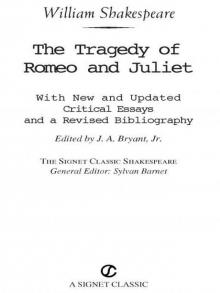 Romeo and Juliet
Romeo and Juliet As You Like It (Folger Shakespeare Library)
As You Like It (Folger Shakespeare Library)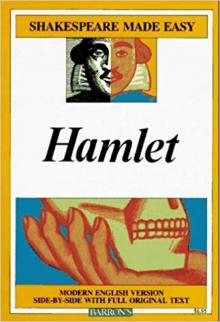 Hamlet
Hamlet Richard II (Folger Shakespeare Library)
Richard II (Folger Shakespeare Library)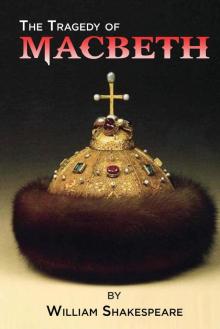 Macbeth
Macbeth Henry V
Henry V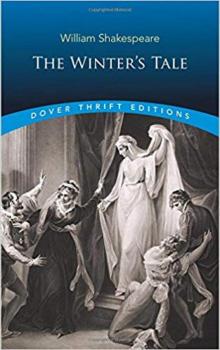 The Winter's Tale
The Winter's Tale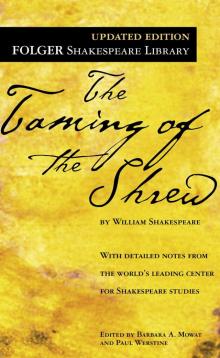 The Taming of the Shrew
The Taming of the Shrew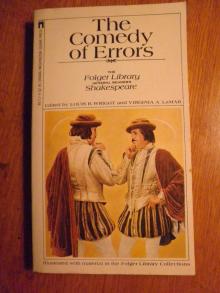 The Comedy of Errors
The Comedy of Errors King Lear (Folger Shakespeare Library)
King Lear (Folger Shakespeare Library)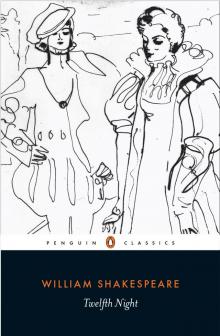 Twelfth Night
Twelfth Night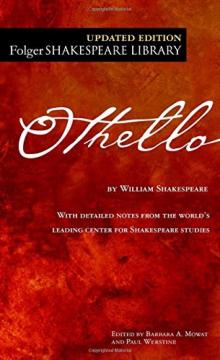 Othello
Othello The Two Gentlemen of Verona
The Two Gentlemen of Verona Henry IV, Part 1 (Folger Shakespeare Library)
Henry IV, Part 1 (Folger Shakespeare Library) King John/Henry VIII (Signet Classics)
King John/Henry VIII (Signet Classics)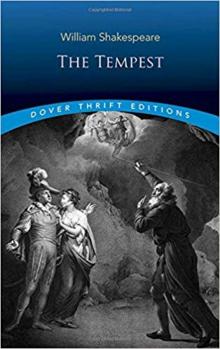 The Tempest
The Tempest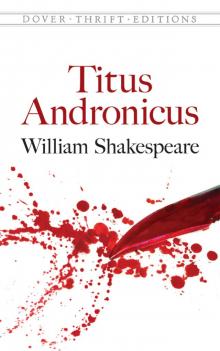 Titus Andronicus (Dover Publications)
Titus Andronicus (Dover Publications)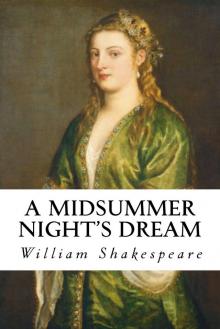 A Midsummer Night's Dream
A Midsummer Night's Dream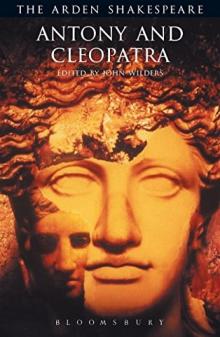 Antony and Cleopatra (Arden Shakespeare: Third Series)
Antony and Cleopatra (Arden Shakespeare: Third Series)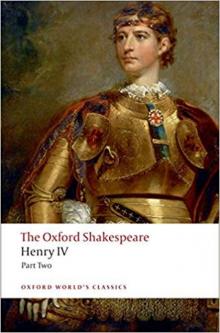 The Oxford Shakespeare: Henry IV, Part 2 (Oxford World's Classics)
The Oxford Shakespeare: Henry IV, Part 2 (Oxford World's Classics)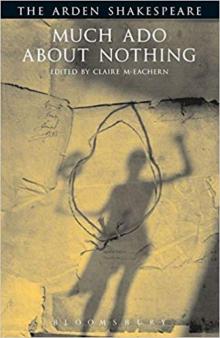 Much Ado About Nothing (Arden Shakespeare: Third Series)
Much Ado About Nothing (Arden Shakespeare: Third Series) All's Well That Ends Well
All's Well That Ends Well Titus Andronicus & Timon of Athens
Titus Andronicus & Timon of Athens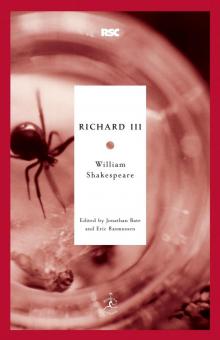 Richard III (Modern Library Classics)
Richard III (Modern Library Classics) Coriolanus
Coriolanus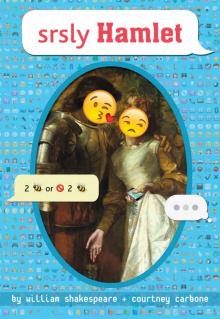 srsly Hamlet (OMG Shakespeare)
srsly Hamlet (OMG Shakespeare) The Merchant of Venice
The Merchant of Venice Richard III
Richard III Richard II
Richard II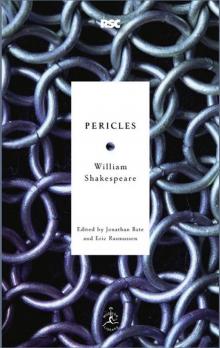 Pericles
Pericles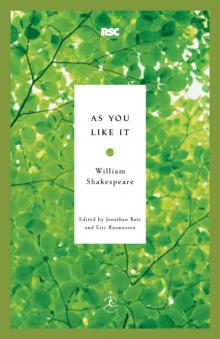 As You Like It
As You Like It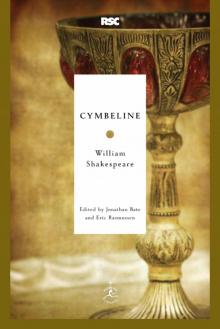 Cymbeline
Cymbeline Alls Wel that ends Well
Alls Wel that ends Well YOLO Juliet
YOLO Juliet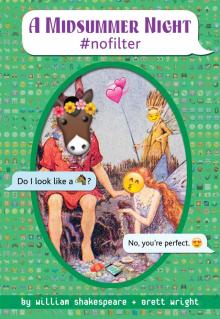 A Midsummer Night #nofilter
A Midsummer Night #nofilter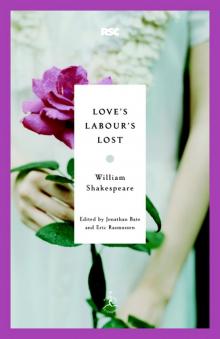 Love's Labour's Lost
Love's Labour's Lost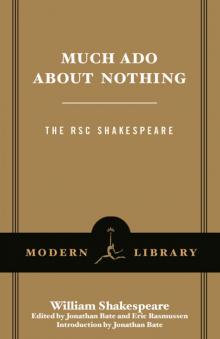 Much Ado About Nothing
Much Ado About Nothing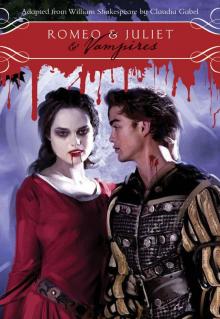 Romeo & Juliet & Vampires
Romeo & Juliet & Vampires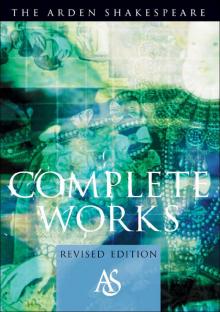 The Arden Shakespeare Complete Works
The Arden Shakespeare Complete Works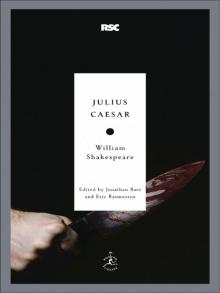 Julius Caesar
Julius Caesar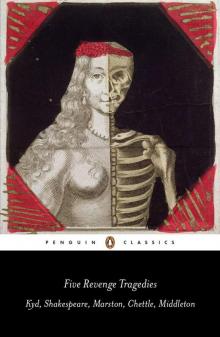 Five Revenge Tragedies: The Spanish Tragedy, Hamlet, Antonio's Revenge, The Tragedy of Hoffman, The Revenger's Tragedy (Penguin Classics)
Five Revenge Tragedies: The Spanish Tragedy, Hamlet, Antonio's Revenge, The Tragedy of Hoffman, The Revenger's Tragedy (Penguin Classics)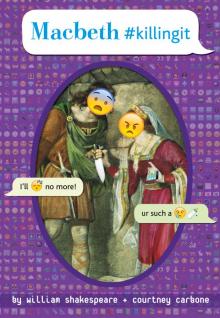 Macbeth #killingit
Macbeth #killingit The Oxford Shakespeare: The Complete Works
The Oxford Shakespeare: The Complete Works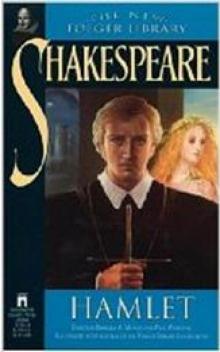 Hamlet, Prince of Denmark (Collins edition)
Hamlet, Prince of Denmark (Collins edition)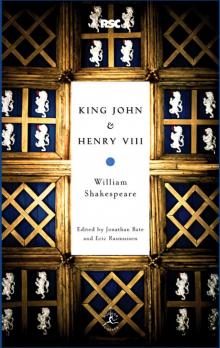 King John & Henry VIII
King John & Henry VIII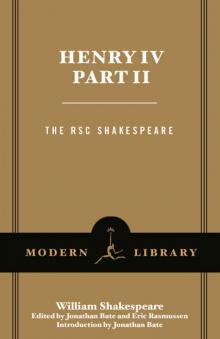 Henry IV, Part 2
Henry IV, Part 2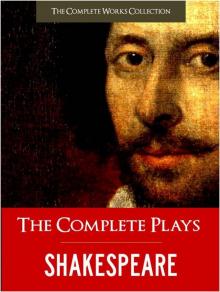 Complete Plays, The
Complete Plays, The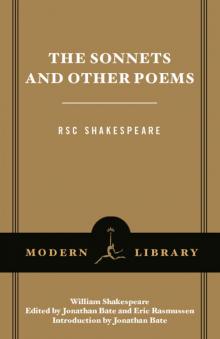 The Sonnets and Other Poems
The Sonnets and Other Poems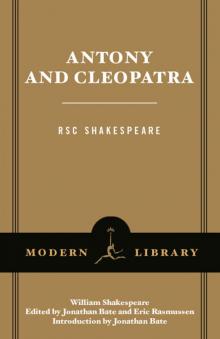 Antony and Cleopatra
Antony and Cleopatra Henry IV, Part 1
Henry IV, Part 1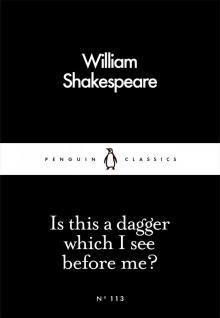 Is This a Dagger Which I See Before Me?
Is This a Dagger Which I See Before Me? The Complete Works of William Shakespeare In Plain and Simple English (Translated)
The Complete Works of William Shakespeare In Plain and Simple English (Translated) The Sonnets
The Sonnets